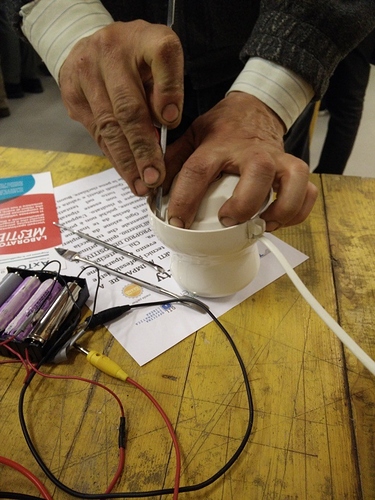At #fixfest-italia, someone brought along a small blender (a Moulinex Illico) that didn’t power on. It was designed in such a way that the entry point into the plastic casing that houses all the internal parts is also a part likely to come into contact with food & liquid, so was tightly sealed. So tightly in fact, that it proved impossible to open without doing irreparable damage to the casing.
Check it out in the repair navigator
While I don’t know whether it was designed to be unrepairable, it was certainly designed to make disassembly near-impossible for non-professionals.
